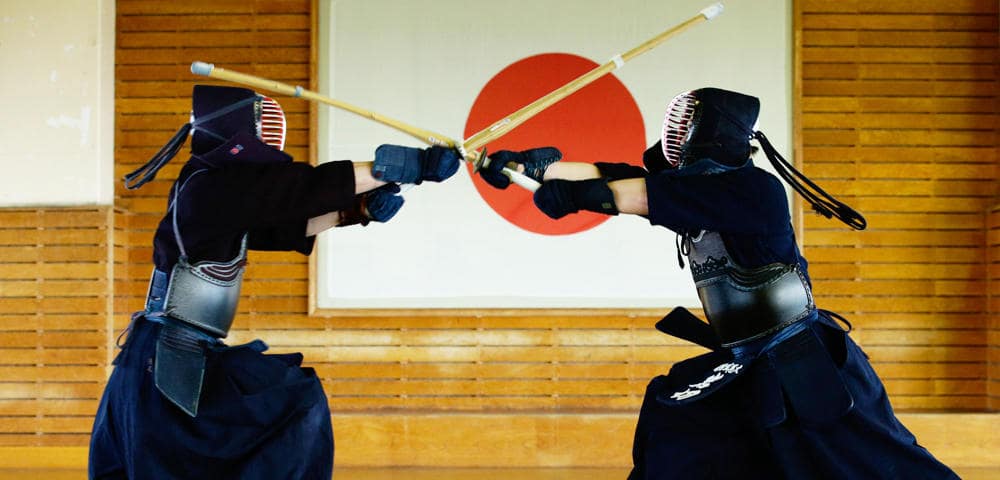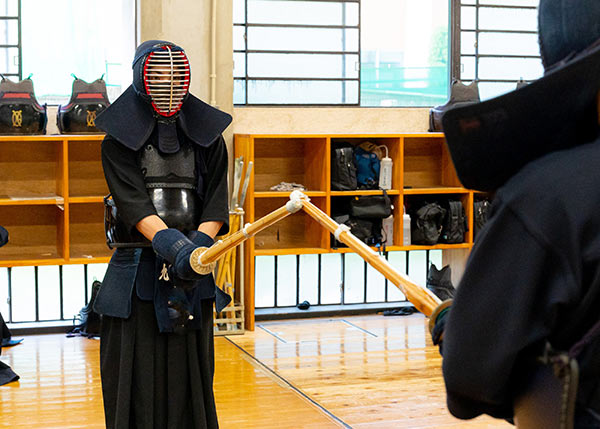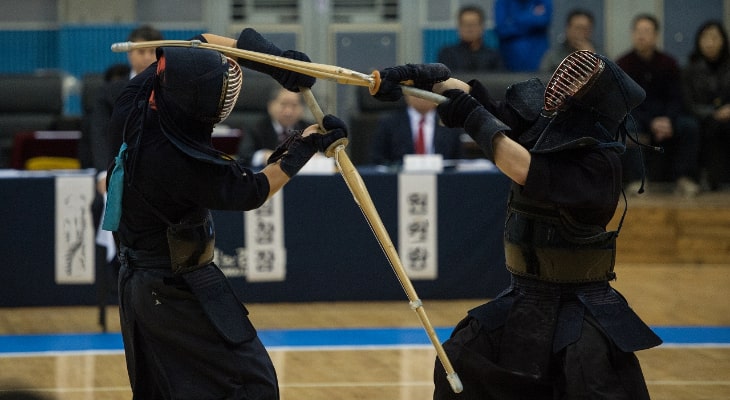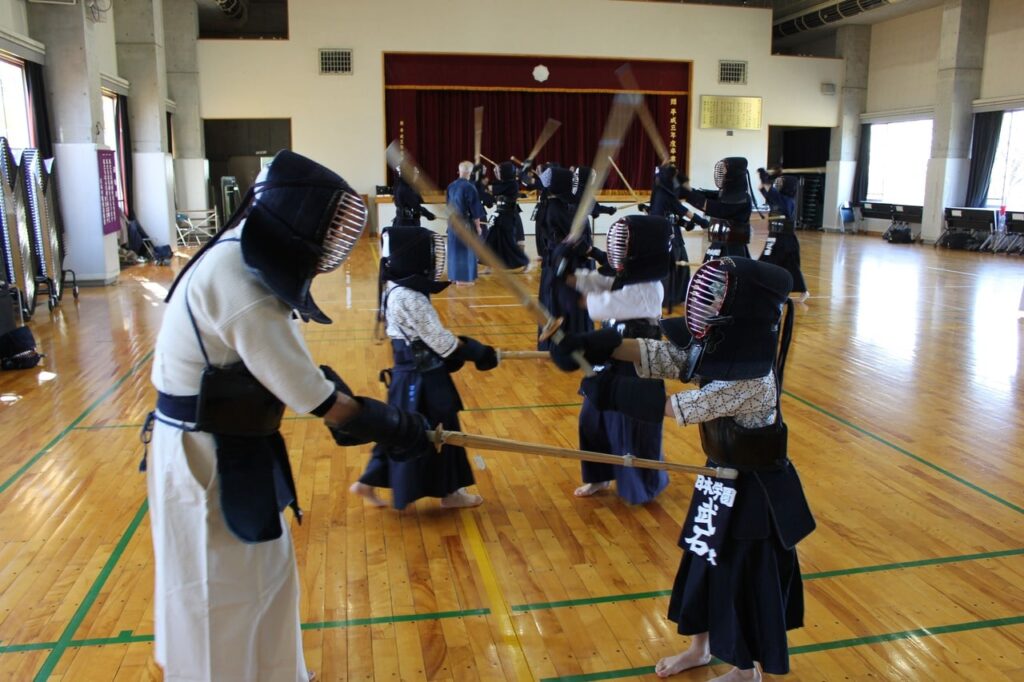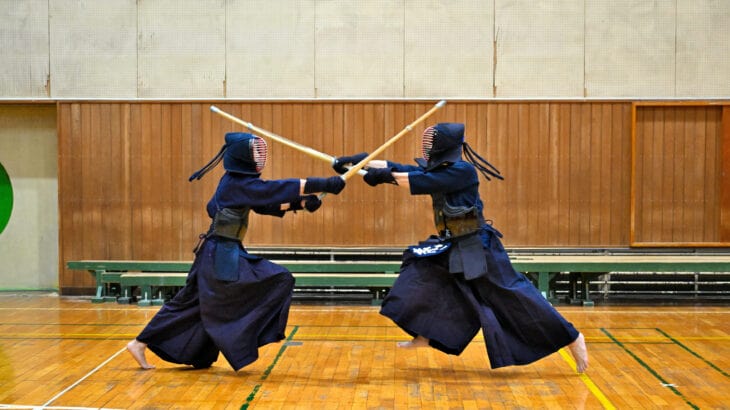
Kendo’s dan system is an important indicator of one’s level of proficiency and indicates the path to growth and certification as a kendo practitioner.
We will explain in detail how many dan holders there are in the country, and especially what dan is considered “amazing.”
In this article, we will take a deep dive into the process of obtaining dans from 2nd dan to the highest rank, 8th dan, the techniques required, the judging criteria, and how these dans are evaluated in the Kendo world.
目次
What is the dan system in Kendo?

Explanation of each dan of Kendo
Dans from 2nd to 8th dan in Kendo are each important milestones that indicate proficiency, technical, and spiritual growth.
Here, we will explain in detail the specific requirements and examination content for each tier.
Specific requirements and examination content for grades 2 to 8
- 2nd Dan : A strong grasp of the basic techniques of Kendo is required, and the accuracy of basic thrusts and strikes will be emphasized in the judging process. In addition, the ability to grasp the appropriate sense of distance and timing during interpersonal training will be evaluated.
- 3rd Dan : Further technical advances are required, and kata demonstrations are often added. Etiquette and behavior during training are also strictly judged, and a deep understanding and respect for Kendo is required.
- 4th Dan : It tests not only your technique, but also your ability to develop your kendo strategically. Specifically, the key points of the judging will be the reading of each match and the selection of tactics during the match.
- 5th Dan : At this stage, the ability to convey the teachings of Kendo to others is also required. In the judging, the overall beauty and dignity of Kendo is evaluated rather than technical perfection.
- 6th Dan : In addition to advanced technique, it is necessary to demonstrate a philosophical understanding of Kendo. In the judging, the sophistication of form and fighting techniques is extremely important.
- 7th dan : This is a dan that requires mental maturity in kendo, and examines not only technical skills but also the humanity cultivated through kendo.
- 8th dan : One of the highest ranks, reaching this dan is considered the ultimate achievement in kendo. The screening process is extremely rigorous, requiring a high level of technical, mental, and educational ability.
The promotion examination for each dan is an important process that evaluates not only the sophistication of kendo techniques, but also the way of life and mental state of kendo.
Kendo practitioners who aim to advance to the next stage are required not only to hone their techniques, but also to put the deep spirituality and philosophy of Kendo into practice in their daily practice.
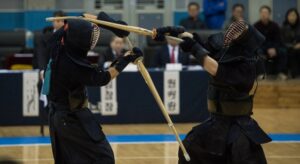
National distribution of Kendo Dans
Kendo is a traditional Japanese martial art, and many people practice it.
The dan system is considered an important indicator of progress in Kendo’s technology and spirituality, but what is the distribution of dan holders nationwide?
In this part, we delve into the number of dan holders nationwide and their statistical data.
Number of dan holders nationwide
Dans in Kendo start from Shodan and go up to 8th Dan, but the number of holders naturally decreases as the Dan increases.
In particular, there are only a limited number of high-ranked kendo practitioners (6th dan and above) in Japan, and in order to reach each dan, it is necessary to undergo years of rigorous training and pass numerous examinations.
For example, according to statistics from the All Japan Kendo Federation, there are only about 700 holders of 8th Dan in the country, which is a very small number .
This is because the examination for 8th Dan is very strict and the passing rate is low.
Statistical data by rank
In terms of specific numbers, Shodan holders are the most numerous, and they exist in the tens of thousands.
The number gradually decreases as you progress through the second and third tiers, and especially when you reach 5 dans and above, the number decreases to several thousand people.
This distribution shows how difficult and time-consuming it is to improve Kendo technique.
The data on dan holders nationwide highlights how deep Kendo is a martial art that requires continuous effort.
For kendo practitioners aiming for each dan, these statistics can help them understand their own position and motivate them to strive for further improvement.
Here are details of the current number of kendo dan holders in Japan:
- Shodan (1st Dan) : Holded by hundreds of thousands of people. This is the most common dan for many people who have just started Kendo.
- 2nd Dan (2nd Dan) : Holded by about several hundred thousand people. Those who continue to practice kendo reach a stage where they can see improvement in their technique.
- Sandan (3rd dan) : Holded by approximately tens of thousands of people. This is a stage where basic techniques are honed and a deeper understanding is required.
- Fourth Dan (4th Dan) : held by several thousand people. Those who have the skills and understanding of intermediate Kendo players will reach this point.
- Godan (5th dan) : held by several thousand people. It requires advanced technique and spirituality, and occupies an important position in Kendo.
- Rokudan (6th Dan) : Held by several hundred people. As a high-level kendo practitioner, you need to have not only technique but also leadership ability.
- Nandan (7th Dan) : Holded by several hundred people. This dan requires extremely high technical ability and deep insight into Kendo.
- Eight Dans (8 Dans) : Holded by several dozen people. It is one of the highest ranks in Kendo, and is only attainable by those with extremely high technique and philosophy.
- Kudan (9th dan) : Held by several people. This is a prestigious rank, held only by a very small number of experts who are recognized as masters of Kendo.
These dans are proof of the experience and effort that a kendo practitioner accumulates throughout his or her kendo career.
Each level requires appropriate skills, knowledge, and spirituality, and the examination is extremely rigorous.
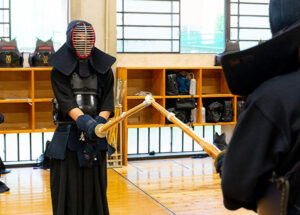
The standard for “great” dan in Kendo is 8 dan.
In Kendo, 8th Dan is considered to be the standard rank that is widely respected as “amazing.”
This dan is highly valued as it embodies advanced technique, deep understanding, and mastery of the Kendo spirit in Kendo.
Ranks that are generally respected and their reasons
8th dan is a very high rank in the kendo grading system. Kendo practitioners with this rank have earned their status through years of rigorous training and examination. 8th Dan Kendo masters are not only highly regarded for their technical skills, but also for their teaching at the dojo and their contributions to the Kendo community.
Reason for being respected:
-
Sophistication of technique : 8th dan kendo practitioners have sophisticated techniques in all aspects of kendo, including sword handling, body posture, and strategy during battle. These techniques have been honed over many years and captivate those who see them.
-
Spirituality : The spirit of Kendo refers to inner growth, including politeness, humility, and self-control. 8th Dan Kendo masters have also achieved this mental maturity, and this attitude is why they are respected.
-
Leadership and Influence : Many 8th Dan Kendo masters also teach younger students in their dojos, and their teachings contribute not only to their technical development but also to their personal growth. We also actively participate in kendo events and seminars both domestically and internationally, contributing to the spread of kendo culture.
-
Depth of Experience : Reaching this dan requires decades of Kendo practice. The experience gained through this process is unrivaled.
8th Dan is a mark of outstanding achievement in Kendo, and Kendo practitioners with that title are of a high standard in terms of technique, spirituality, and leadership.
As such, the 8th dan kendo master is widely respected and continues to influence the entire kendo world.
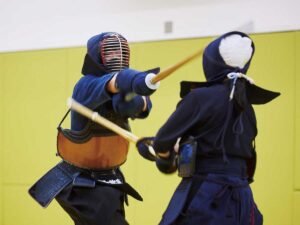
Training and preparation methods for each level
When aiming for a dan in Kendo, it is necessary to have an effective practice method and mindset appropriate for each dan.
Here, we will introduce training methods suitable for each dan, from first dan to high dan.
Training for beginners
Kendo practitioners aiming for Shodan should focus on mastering basic techniques.
It is mainly recommended to repeatedly practice practice swings, basic footwork, and basic hitting techniques.
At this stage, it is important to acquire accurate technique and kendo form.
Training for intermediate tiers (2nd to 4th dan)
This stage requires an understanding of more complex techniques and tactics.
Specifically, this includes applied techniques in interpersonal practice, kata performance, and strengthening footwork to increase reaction speed.
In particular, ladder training is effective in improving reaction speed and footwork accuracy.
Training for high dans (5th dan and above)
Kendo practitioners who aim for higher ranks are evaluated for their ability to convey the philosophy and teachings of Kendo to others, so they are required to improve not only their technique but also their leadership ability.
Training at this stage is recommended not only to hone one’s own skills, but also to be involved in teaching younger students.
Strength training aimed at improving explosive power and core strength is also helpful.
Mindfulness and continuous growth
No matter what dan you choose to challenge for, it is important to emphasize the spirituality of kendo and achieve spiritual growth through daily practice.
Kendo is not just a physical skill, but a martial art that emphasizes the trinity of mind, technique, and body, so it requires a constant self-examination and a mindset of continuous dedication.
By practicing these training methods, you will be ready for the dan exam and can expect a steady step up in the way of Kendo ( Kendo, the path to improvement ) ( Kendo, the path to improvement ) .
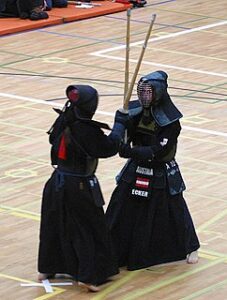
Kendo Dan Ranks and Social Recognition
The dan system of Kendo is one of Japan’s traditional martial arts, and has a long history and formal tradition.
Dans are highly valued as proof of technical improvement and spiritual training, and have a certain level of social recognition in Japanese society.
Changes in the dan system
Kendo’s dan system was established during the Meiji period and has been revised several times since then.
In the early days of the dan system, dans primarily served as indicators of technical level and spiritual growth, but in recent years they have been given a broader range of value.
In modern times, obtaining a dan is not only seen as a mark of accomplishment in Kendo training, but also as evidence of traits and skills that are valuable in society, such as leadership, perseverance, and concentration.
Kendo dan ranks are generally highly respected in Japanese society.
In particular, those with high dans are often respected for their skill and depth of spiritual training.
In the past, respect for martial arts and the spirit of bushido was often emphasized, but in modern times there is also an emphasis on the spiritual aspects and ethical values of kendo practice.
Internet influence
With the spread of the Internet, information about Kendo’s dan system and its social recognition has become widely shared.
Through online discussions and information exchange, students are deepening their understanding of the significance of obtaining dans and the spiritual aspects of kendo.
In addition, dan examinations and guidance are now available online, which has expanded opportunities to obtain dan dans.

Interviews and advice from high-ranking people
Valuable advice and experiences from high-ranked kendo practitioners will serve as valuable guidelines for your kendo training.
They are people with many years of experience, and their insight and wisdom are extremely beneficial to budding Kendo practitioners.
Interviews with high-level dans focus on the lessons and insights they have gained through their Kendo training.
They have deep insight not only into technical aspects, but also into spiritual growth and ethical values.
Valuable advice and experiences
-
The importance of perseverance and effort : Those with higher ranks emphasize the need for perseverance and effort in Kendo training. It is sometimes stated that continuous effort and perseverance lead to technical improvement and spiritual growth.
-
Self-development and ambition : High-ranking individuals always seek self-development and preach the importance of transcending oneself. It is sometimes stated that growth is possible by continuing to challenge one’s limits.
-
Respect and courtesy to the opponent : Kendo is a dialogue with the opponent, and respect and courtesy to the opponent are important. High-ranked students believe that respecting others and treating others with courtesy are the fundamentals of Kendo training.
Advice and experiences from high-ranking students not only serve as guidelines for Kendo training, but also provide wisdom that can be applied to daily life and other fields.
It is important to listen to their teachings and apply their wisdom to your own life.
